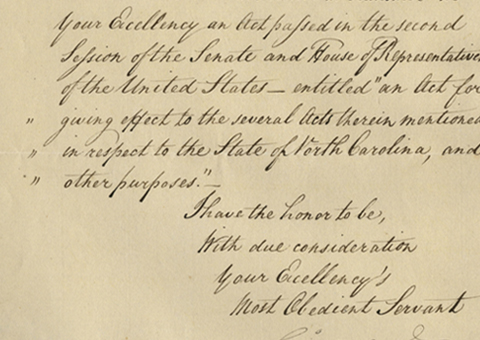Sold – Manet Sends a Gift, Likely to Friend and Inspiration Stéphane Mallarmé

Manet was one of the first 19th century artists to approach modern-life subjects, and was a pivotal figure in the transition from Realism to Impressionism. His early masterworks The Luncheon on the Grass and Olympia engendered great controversy, and served as rallying points for the young painters who would create Impressionism. Today...
Manet was one of the first 19th century artists to approach modern-life subjects, and was a pivotal figure in the transition from Realism to Impressionism. His early masterworks The Luncheon on the Grass and Olympia engendered great controversy, and served as rallying points for the young painters who would create Impressionism. Today these are considered watershed paintings that mark the genesis of modern art.
Mallarme was a French poet and critic and very influential in Impressionist circles. Among his closest friends was Manet. In the early 1870’s, Manet and Mallarme both lived on rue de Moscou and saw each other nearly every day from about 1872 until Manet died May 7, 1883. Rosemary Lloyd wrote “In the October of that year his widow, Suzanne, remarked in a letter to Mallarme: ‘You really were his best friend, and he loved you dearly.’” The friendship was particularly important in establishing Mallarme as a major poet in Paris. The progressive artists and poets who lived during the Belle Epoch lived two completely different lifestyles: Bohemian and Bourgeoisie. Manet lived the Bourgeoisie lifestyle like Mallarme. Both are considered founders in their fields—poetry and art. The Portrait of Mallarme, Manet’s accompanying sketches for Mallarme’s translation of Poe’s “Raven,” his poem “Afternoon of the Faun”, and Mallarme’s articles supporting Manet’s art all fell between 1874 and 1876. This letter is addressed to “Mon cher poete,” a opening known to have been used for Mallarme by his contemporaries, making him the likely recipient.
Autograph letter signed, no year but March 31, likely to Mallarme, addressed to “My dear poet. Please do me the honor of making use of this small tobacco box, which I made just for you, and for believing always in my devotion. Ed. Manet.”

Frame, Display, Preserve
Each frame is custom constructed, using only proper museum archival materials. This includes:The finest frames, tailored to match the document you have chosen. These can period style, antiqued, gilded, wood, etc. Fabric mats, including silk and satin, as well as museum mat board with hand painted bevels. Attachment of the document to the matting to ensure its protection. This "hinging" is done according to archival standards. Protective "glass," or Tru Vue Optium Acrylic glazing, which is shatter resistant, 99% UV protective, and anti-reflective. You benefit from our decades of experience in designing and creating beautiful, compelling, and protective framed historical documents.
Learn more about our Framing Services







































































































